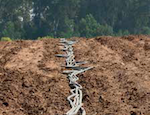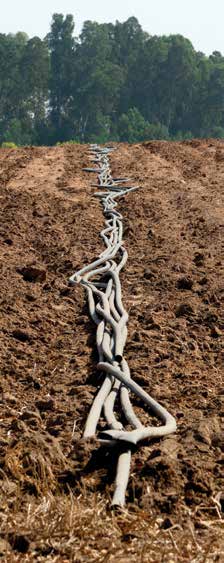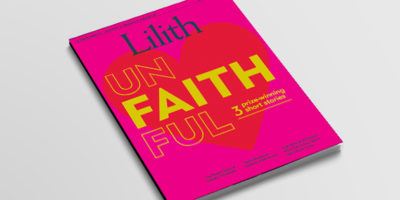
A School for Peace
Nava Sonnenschein’s decades of hard conversations.

Photo: Avram Hay
The summer of 2018 saw a breakthrough for female recruits joining the male-dominated ranks of the combat units in the Israel Defense Forces. Some 1000 young women volunteered for combat duty, 150 more female recruits than in 2017, and up from 547 in 2012. Four (not new recruits) became the first female tank commanders, and the Israeli Air Force announced the appointment of the first female commander of a flight squadron.
Leaders from women’s organizations, and many politicians, hailed these events of breaking gender boundaries as symbols of feminist achievement and gender equality. But some viewed it differently.
Dr. Nava Sonnenschein, a veteran peacemaker and teacher of conflict resolution who has focused on Israeli-Palestinian dialogue for decades, declared that this upsurge is not the equality for which Israeli women should be striving. “Women should not barrel their way in to gain equal access to combat units,” said Sonnenschein, in an interview in Hebrew with Lilith. “Instead, they should fight to change the pervasive militarism in Israeli society.”
That’s a cause Sonnenschein has been engaged in for some 45 years, since she herself served in the IDF as a teacher at the Ein Karem Agricultural School in 1973—notably, not a combat position. In the Yom Kippur War that year, Sonnenschein lost several classmates and friends, and her impulse to pursue peace actively was sparked after she attended a memorial ceremony at her high school in Haifa. “Among the many people I knew who had been killed were my first love, Nimrod Gazit, and Muly, my cherished counselor from the HaMachanot HaOlim youth movement. I had also visited an injured friend at Soroka Hospital in Beer Sheva, and saw soldiers badly burned, with body parts hanging in the air.
“When the speakers at the memorial ceremony recited rote lines about valiant soldiers sacrificing their lives so that we could live, I felt a pit in my stomach. Was there really no alternative?”
Determined to find one, Sonnenschein co-led her first Israeli-Palestinian dialogue group utilizing a Jewish and an Arab facilitator. This was in 1974, while she was studying for a bachelor’s degree in education and art at University of Haifa, That group opened the door to a lifetime of peace work.
Alongside her peace activism, Sonnenschein has supported feminist principles. But an influx of women into combat units is not the gender segregation we should be challenging, she said.
“A border policewoman with an M16 slung over the shoulder frisking an elderly woman at a checkpoint is not the pinnacle of equality between the sexes,” asserted Sonnenschein. Nor is it the best use of that inductee’s talents. “Women should strive to promote a different sort of equality in our society: democracy, justice, and peace for all those who live in Israel and Palestine.”
Perhaps the historic exclusion of women from combat units has been a determining factor in bolstering their impulse to participate in Israeli-Palestinian dialogue. A byproduct of this exclusion has been that more women appear to have gravitated to peace work. And once engaged in dialogue, women seem to exhibit a greater ability to feel the other side. “From my vantage point, women seem to have more interactive tools to reach across the divide,” says Sonnenschein.
“IDF soldiers who spend three years policing civilians…in the West Bank begin to see the Palestinians not as people,” said Sonnenschein, speaking in Hebrew. “It’s a very difficult job. After these soldiers are released from the army, their motivation to participate in Israeli-Palestinian dialogue is greatly diminished.”
Sonnenschein knows a great deal about peacemaking. She is one of the founders of Neve Shalom-Wahat al-Salam (“Oasis of Peace”), an egalitarian community of Jewish and Palestinian-Arab citizens of Israel, located on a Latrun hilltop between Jerusalem and Tel Aviv. She is also a founder and director of the country’s first and only School for Peace, located in the same community. Since 1980, Sonnenschein has taught some 70,000 Israelis and Palestinians, aged 16 to 72, how to “dialogue-around-conflict,” using a signature method she helped develop at the School for Peace.
The method is rooted in social psychology. It puts the conflict right on the table and addresses the asymmetry of power, allowing for the identity of each side to stretch to include the other.
And stretch it does. For Israeli Rachel Yanay, one of the dialogue participants interviewed for a book by Sonnenschein now out in English, The Power of Dialogue Between Israelis and Palestinians, this stretching involved an embrace of her Mizrahi identity, and changed her relationship to Palestinians.
“First of all there’s my acceptance of the Arab-ness in me; I was more prepared to acknowledge it (after the course). And then there is a different connection to the other place: now it’s not off limits, not unacceptable. It is not the evil enemy who has no connection with me. It is part of who I am. Denying that they are part of who I am is incomprehensible now. What were they before? Some kind of group that you designate, they don’t belong and they don’t have to belong, and heaven help us if they do belong because they want to kill me; they want me not to be here.”
And Ayelet Roth says “The fear hasn’t disappeared, but it has diminished. I see myself as someone who has a partner. It’s possible to take action together to influence what happens in this country.”
For Maram Masarwi, facilitating the School for Peace course provides “tools for your whole life,” she says.
“As soon as you begin this process, it’s as though you’re beginning to see past your blindness. Then no one can tell you not to see, because you are already seeing. And you also find that you are dealing with yourself through the way you are dealing with the other.”
School for Peace staff members have taught their method in Cyprus, Northern Ireland, the UK, South Africa, Costa Rica and Kosovo. And in Sonnenschein’s decades of work in Israel and abroad, she told Lilith that she has found peace processes advance further when there is a higher proportion of women on the team. Strong empirical evidence suggests that including women in the various aspects of peace negotiations yields better results. For example, an International Peace Institute study of 182 signed peace agreements between 1989 and 2011 found that “when women are included in peace processes, there is a 35 percent increase in the probability that a peace agreement will last 15 years or more.” But everywhere women are in fact woefully underrepresented at the peace table. Between 1992 and 2011, only four percent of signatories to peace agreements were women, and less than ten percent of the negotiators at peace tables.
For Nada Matta, a Palestinian woman living in Israel who has been a facilitator of dialogue groups, the process of facilitation is “not easy,” as she says in the book. “I remember once regarding the subject of women, which is a very sensitive subject with the Jews. By the way I don’t much like to get into that, because the Jews love to latch onto it as a weak spot (of the Arab group). On the other hand, things must be addressed candidly. I remember on one occasion, something about the hijab, I think. Taking a position that is farther removed from Arab culture is not easy, and some issues are more sensitive than others.”
Sonnenschein has observed that in the Israeli-Palestinian case, both Israeli and Palestinian women are more effective than their male counterparts at bringing the central issues to the peacemaking table and engaging in constructive discussion.
“When our courses include Palestinians from the West Bank, we feature a three- or four-day simulation of negotiating a final-status agreement between Israel and Palestine. Women are consistently greater catalysts for this process. They’re better able to see the interests of the other side. Instead of just thinking of ‘what do I lose’, they consider the needs of each side on matters like Jerusalem, borders, sovereignty and historical justice with the refugees.”
Asked if patriarchal tendencies common in Israeli and Palestinian society creep into the dialogue, Sonnenschein nodded yes.
“There are times where I listen to men from both sides sharing their views vociferously, with notably less participation from the women. When it is my turn to give feedback, I turn to the women and say, it would be great to hear your voices!”
Sonnenschein has spent nearly four decades using her voice to promote dialogue. In 2010, she was awarded the U.S. State Department’s “Women of Courage” certificate for her “tireless work in advocating for social change and coexistence.” Last June, Sonnenschein and her colleague, Harb Amara, were awarded the Institute of International Education’s 2018 Victor J. Goldberg Prize for Peace for creating and leading the Change Agents Program for Jewish and Palestinian Professionals.
“Meeting the ‘other’ in the right environment and under the right conditions can change your life and your approach,” she says. The Power of Dialogue Between Israelis and Palestinians: Stories of Change from the School for Peace (Rutgers University Press) features interviews, mostly conducted around 2008, with 25 Israeli and Palestinian graduates of the program, 11 of them women, telling how they implement what they’ve learned “to promote peace in human rights, politics, environment, social work, urban planning, civil engineering, you name it.”
Ruth Ebenstein is a writer, a historian, public speaker and peace activist. Her forthcoming memoir is Bosom Buddies: How Breast Cancer Fostered an Unexpected Friendship Across the Israeli-Palestinian Divide.


